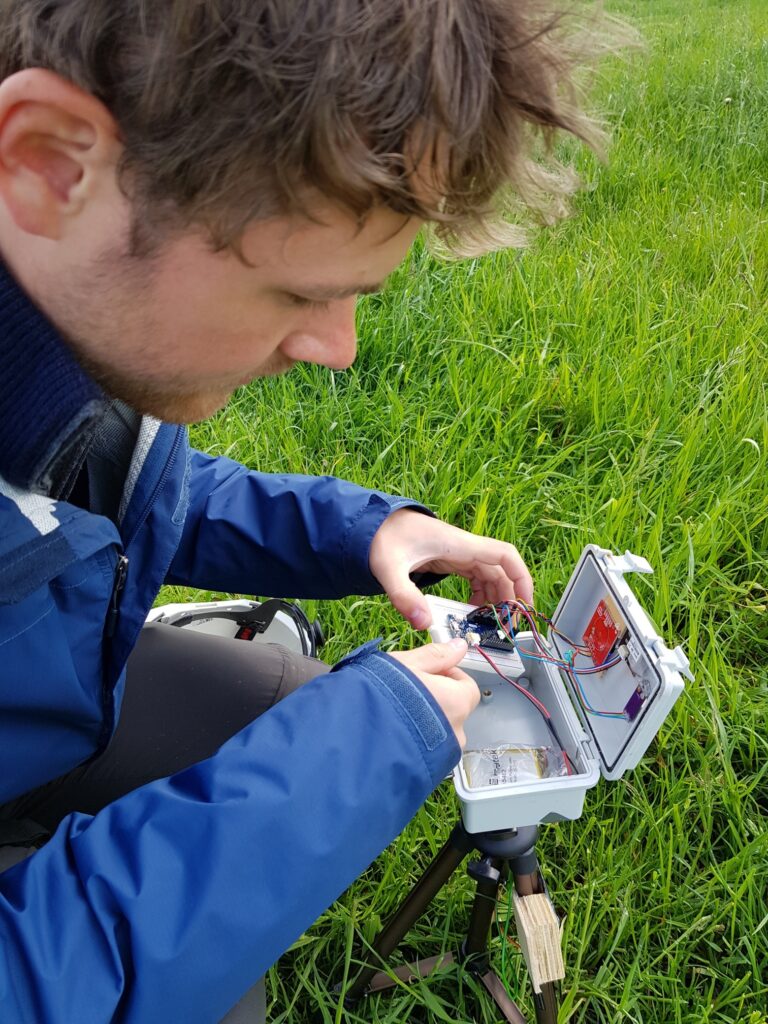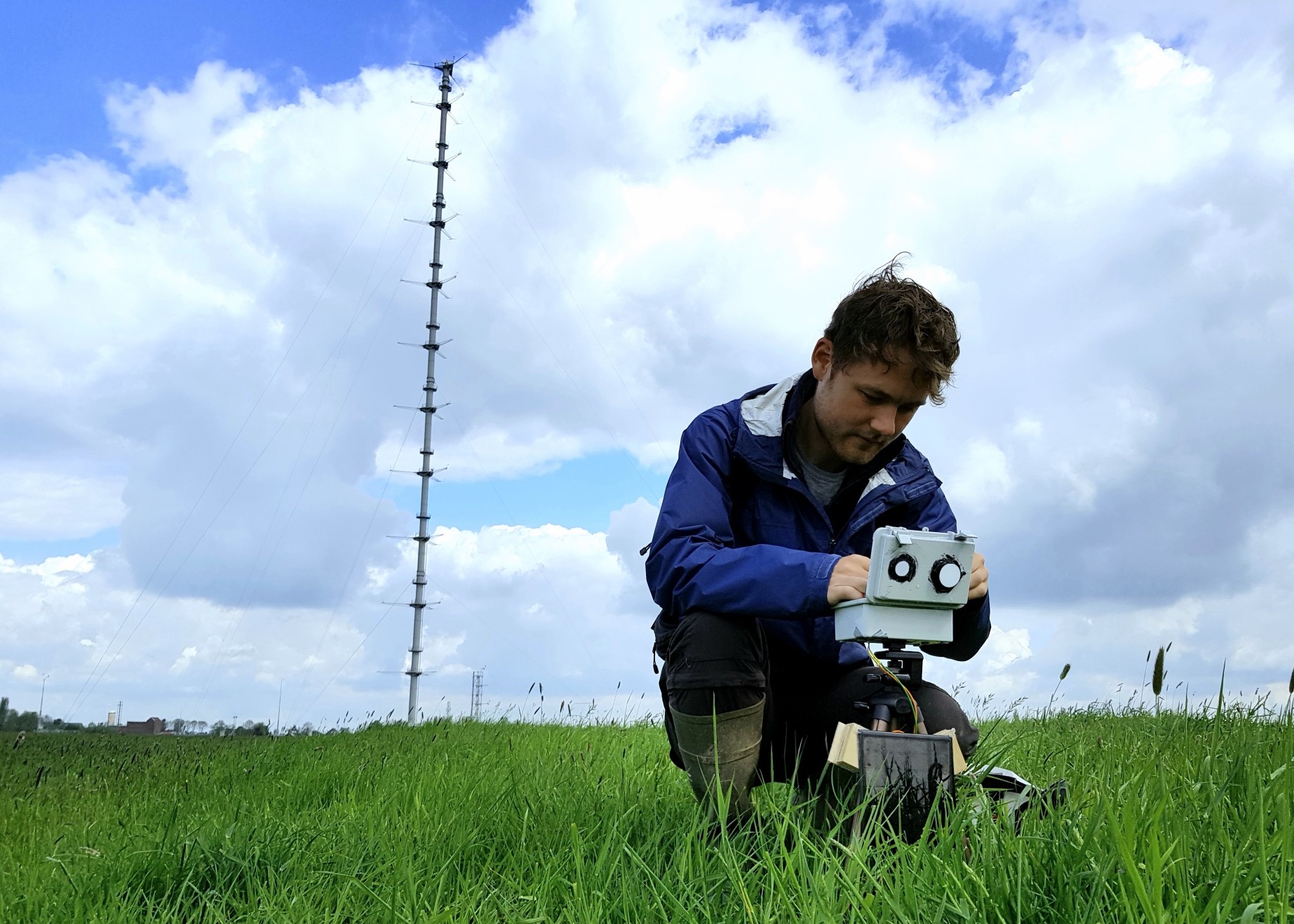Rays of the sun are the fuel that powers solar panels. Clouds, however, disturb this input. Thus, the weather determines how much energy solar panels are able to produce. Anyone with a solar array on their roof will agree. The energy companies have trouble working around these fluctuations. Wageningen meteorologists aim to get a better grip on these fluctuating yields.
Near the Cabauw measuring station, the last radiation measurements of a two-week pilot were taken last Friday. In the tall grass, there are 25 homemade radiation meters in a grid, spaced 50 metres apart. The small grey containers the size of a bread bin measure the intensity of the sun’s rays every ten seconds.
Birds, flies, ants, every disturbance is reflected in the measurements
Wouter Mol, PHD candidate Meteorology and Air Quality
And, furthermore, the boxes measure the entire visible spectrum, from 350-899 nanometres in eighteen different wavelengths. Nothing gets past the sensors. ‘Birds, flies, ants, every disturbance is reflected in the measurements’, PhD candidate Wouter Mol explains. He takes care to approach the measuring instrument in such a way that his shadow does not affect the readings. After all, each reading counts.
Mol is one of the PhDs working on this Vidi-project headed by meteorologist Chiel van Heerwaarden. Mol has been at it for about a year now. This measuring session is the first pilot, slightly delayed due to corona. In between the mowing sessions, he may test his equipment for two weeks. Following that, we will move the equipment to the Lindenberg Meteorological Observatory southeast of Berlin for the next test.

Crammed with equipment
There is a reason to conduct the measurements on Cabauw. Radiation readings are useless if they are not coupled with additional data on the surroundings. The area around the transmission mast is crammed with equipment. Mol: ‘You will find cloud radars, an aerosol meter and a camera that takes a picture of the sky every minute.’
‘All of this information can be linked to our readings,’ Mol explains. In doing so, the sun tracker is of crucial importance. This is a device that differentiates between direct and indirect sunlight. Mol: ‘these two components are essential because it shows what portion of the radiation originates directly from the sun, and what portion is reflected by the clouds.’
From a peak in bright sunlight to a dip in the shade in less than a second
Wouter Mol, PHD candidate Meteorology and Air Quality
Mol benefited from the weather over the past two weeks. Clouds alternated with intense sunshine, which led to considerable fluctuations in radiation. ‘From a peak in bright sunlight to a dip in the shade in less than a second. The boxes are equipped with GPS, which allows us to follow the shadow cast by a cloud to the millisecond, thanks to a link with the sensors.’
Self-made
The boxes with measuring equipment were designed by colleague meteorologist Bert Heusinkveld, the Meteorology and Air Quality Group’s creative builder. The boxes are powered by a small solar panel attached to the tripods with wooden blocks. Self-made, cheap, and it works. Mol points at a commercial device. ‘Our 25 radiation meters combined cost as much in materials as that single device over there.’
The fieldwork forms the basis. The ultimate goal is to develop understanding. Mol: ‘On the one hand, we want to gain more insight into the relationship between radiation and the weather. In addition, the data is to contribute to better models that not only increase our understanding but also help us produce more accurate forecasts.’

 Wouter Mol checks one of the radiation meters. Photo Roelof Kleis
Wouter Mol checks one of the radiation meters. Photo Roelof Kleis 

